How Much Does HR Software Cost in 2025?
How Much Does HR Software Cost and What to Look For: HR software that is licensed on a monthly basis costs between $6 to $12 per employee per month. It includes payroll, insurance, time & attendance software, and more. Check out some of our preferred brands and their plans:
Featured HR Solutions
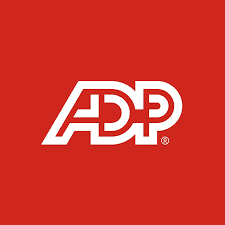
ADP
- Cloud-based solution
- Audit trails for time and attendance
- Automates reporting and other common HR functions
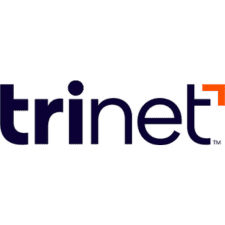
TriNet
- Self-help for employee benefits management
- Low-cost plans
- Dozens of integrations

Rippling
- $35/month + $8 PEPM
- Customizable templates
- Global workforce and automatic payroll tax calculation
Calculate the Cost by Employee Size
The programs provide for a wide range of human resource functions, including managing current employees, employee training, performance evaluation, recruiting, and more. The exact features that you’re looking for will affect which part of the price range your software falls into.
Not sure where to start? Tell us a little bit about your business and will help match you up with the right human resources companies.
Compare Pricing – Start Here:
What to Know About HR Software Prices
 Are you a business that is weighing up the pros and cons of different software systems? Here are the information and software prices you need to know.
Are you a business that is weighing up the pros and cons of different software systems? Here are the information and software prices you need to know.
The right software can absolutely transform your business.
Small businesses and large businesses alike can all benefit from the simplification that software can provide.
Repetitive tasks such as payroll, recruiting, and performance reviews can all be systemized with a single program. And your sales, your productivity, and your efficiency will only benefit.
Today, we are covering the ins and outs of different software options and software prices.
COMPARE HR SOFTWARE QUOTESHR Software Pricing Factors
The cost of HR software can vary widely based on several factors, including the size of your organization, the range of functionalities you need, and the type of software deployment you choose (on-premise vs. cloud-based). Let’s delve into these aspects in more detail.
Factors Impacting HR Software Cost
- Size of the Organization: Many HR software vendors price their offerings based on the number of employees. Smaller organizations might pay less overall but more per employee, while larger organizations can often secure volume discounts.
- Functionality and Features: Basic HR software might include employee records management, time and attendance tracking, and payroll integration. More advanced features like recruitment and onboarding, performance management, learning management systems (LMS), and advanced analytics will increase the cost. The more comprehensive your needs, the higher the price.
- Deployment Type:
- On-Premise: This involves installing the software on your own servers. It requires a larger upfront investment in both the software and the necessary hardware, along with ongoing maintenance costs. However, it offers more control over the data and customization.
- Cloud-Based (SaaS): Subscription-based and typically priced per employee per month, this option reduces upfront costs and offloads maintenance to the vendor. It’s scalable and offers remote accessibility.
- Customization and Integration: Tailoring the software to your specific needs or integrating it with other systems (like ERP or existing HR platforms) can significantly increase costs. Customization might be necessary for unique organizational processes, while integration helps in maintaining a seamless data flow between different systems.
- Support and Maintenance: Ongoing support, updates, and maintenance are crucial for the smooth operation of HR software. While some vendors include these costs in their subscription fees, others may charge extra for premium support services or updates.
Ways to Save on HR Software Costs
- Identify Core Needs: Focus on software that meets your core HR needs without paying for unnecessary features.
- Compare Deployment Options: Evaluate the total cost of ownership (TCO) of on-premise vs. cloud-based solutions, considering both immediate and long-term costs.
- Seek Bundled Solutions: Some vendors offer bundles that include several HR functions at a lower cost than purchasing each module separately.
- Negotiate Pricing: Especially for larger organizations, there’s often room to negotiate pricing based on the number of users or the length of the contract.
- Opt for Scalable Solutions: Start with what you need and choose software that allows you to add features as your organization grows, rather than paying upfront for advanced features you might not yet need.
Things to Look Out For
- Hidden Costs: Be wary of additional fees for implementation, data migration, training, and ongoing support.
- Overbuying: Purchasing more features than necessary can significantly inflate costs without adding value to your organization.
- Vendor Stability: Opt for reputable vendors with a proven track record. New or unstable vendors might offer attractive pricing but could pose risks in terms of reliability and data security.
- User Adoption: The best HR software is the one that your team will actually use. Ensure the interface is user-friendly and consider the learning curve for your employees.
- Data Security and Compliance: Especially for cloud-based solutions, ensure that the vendor complies with relevant data protection regulations and industry standards to safeguard your organization’s and employees’ data.
The cost of HR software depends on a myriad of factors, and there’s no one-size-fits-all answer. By understanding your organization’s specific needs, evaluating the total cost of ownership, and carefully selecting features and deployment options, you can make an informed decision that balances cost with functionality.
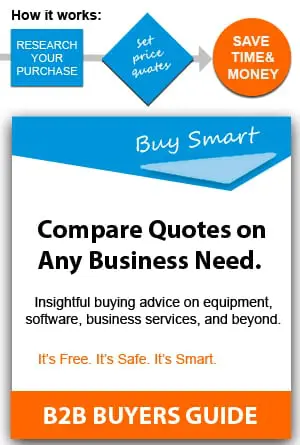
What is the Right HR Software for my Business?
Regardless of software prices, it is important to have some basic goals and ideas of how HR software can help you accomplish these. Here are some specific aspects to think about:
Size:
How many employees do you have? Given that most HR Software providers charge on a per-employee rate, this is important to know.
It is only important to know given that trying to centralize the payroll of 30 employees is a lot simpler of a task than trying to centralize the payroll of 1,000.
Industry:
Different programs are designed for different industries. While some are adaptable to industries across the board, it might be worth it to invest in software that is specialized in your sector of the market.
For example, companies in the education field have very different hours demands of employees, vacations, onboarding processes. Therefore, schools and educational institutions, generally, use HR Software that fits these unique qualities.
Budget:
As we have seen, software prices vary greatly. How much are you willing to spend? Many companies often allow you to use their product for a month completely free of charge.
As a business, you may want to take advantage of this. Go through a trial and error period to see which product is the best match.
Functionality:
HR Software is a very large umbrella term that covers a lot of different tasks. It’s imperative for you to know exactly what you need help with as a business.
We like to say, “If it’s not broke, don’t fix it!” In other words, it can be tempting to use software for every aspect of your business. While sometimes, this makes things a lot more efficient and works wonders for your business, in other cases it’s not totally necessary.
In addition, all services do not always come in one complete package with one price. As we saw with Bamboo, payroll services up the price tag by $4 per employee and $25 per month.
Top 8 HR Software Brands
When it comes to buying software, you will first need to weigh out your options. What are your priorities as a business? What is eating up most of your time? What is most important to your clients? to your employees?
These are the questions that need to be answered when you are looking into buying HR software. You can also check out this buyer’s guide for more factors to think about.
Here is a breakdown of different software options. Although, there are many, many others out there!
1. ADP Workforce Now
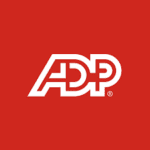
ADP Workforce Now is an all-in-one HR management system designed to support the entire employee lifecycle, from recruitment to separation. It is ideal for small-to-medium-sized businesses (SMBs) with over 50 employees but less than 1,000. The platform is known for its wide range of features, including a massive library of integrations, robust payroll functionalities, and global payroll support. However, it has been noted for a steep learning curve and slower customer service responses. ADP Workforce Now offers optional HR advisory services and has extensive product lines for growing companies.
2. BambooHR
![]()
BambooHR is designed for medium-sized businesses and is well-regarded for its comprehensive features, including compensation management, people analytics, an applicant tracking system (ATS), and a payroll add-on. The platform shines in its ability to handle all HR activities in one system, but it may not be suitable for very large businesses due to its lack of complexity in benefits administration and support for international employees. BambooHR’s pricing includes a one-time implementation fee with various add-ons available to cater to specific needs.
3. Workday

Workday is a cloud-based human capital management system for large and enterprise businesses, including global companies. It offers a wide range of features, such as financial management software options and add-ons for analytics, payroll, and talent management. Workday is praised for its easy-to-navigate interface and comprehensive HRMS features but has limited integrations compared to competitors. Pricing is not transparent and requires contacting their sales team for a custom quote.
4. Rippling

Rippling started as an online payroll service and has expanded into a comprehensive workforce management platform. It uniquely combines payroll, HR, finance, and IT into one system, though businesses can choose only the HR and payroll package if preferred. Rippling has expanded its international capabilities, offering global payroll and HR management tools. It is particularly noted for its easy-to-use interface and extensive integration options. Rippling’s pricing starts with a base platform fee, with additional modules as add-ons.
Each of these HR software platforms offers a unique set of features and benefits, designed to cater to businesses of different sizes and needs. For detailed exploration of these and more HR software solutions, it would be beneficial to visit their respective websites or contact their sales teams directly for the most current and comprehensive information.
5. TriNet Zenefits

TriNet Zenefits is an HR platform known for its easy-to-use interface and comprehensive features covering the entire HR spectrum. It stands out for its transparent pricing plans and robust benefits administration functionality. This platform is especially suitable for small to medium-sized businesses looking for a versatile HR solution that can handle everything from payroll to performance management efficiently.
6. Gusto

Gusto is a cloud-based platform that primarily focuses on payroll, benefits, and HR management for small to medium-sized businesses. It is praised for its user-friendly interface, transparent pricing, and exceptional customer support. Gusto offers features such as automatic payroll tax processing, health benefits administration, and compliance management. Its scalability and ease of use make it a popular choice among startups and growing companies.
7. Paycor

Paycor is a comprehensive HR and payroll software designed to meet the needs of small to medium-sized businesses. It offers an array of services, including payroll processing, tax compliance, time and attendance tracking, and recruiting tools. Paycor is recognized for its intuitive platform, detailed reporting capabilities, and strategic HR functionalities that help businesses manage their workforce more effectively.
8. UKG Pro (UltiPro)

UKG Pro (formerly known as UltiPro) is a cloud-based human capital management (HCM) solution suitable for medium to large enterprises. It provides a wide range of HR, payroll, talent, and time and labor management solutions. UKG Pro is known for its comprehensive employee insight, personalized recruiting experiences, and global compliance capabilities. Its robust analytics tools and user-friendly interface help businesses optimize their workforce management strategies.
COMPARE HR SOFTWARE QUOTESA Comprehensive Guide to Choosing the Right HR Software for Your Company
Selecting the ideal HR software for your organization can be a daunting task. With the multitude of options available, it’s essential to approach this decision methodically. Here’s a detailed guide to help you navigate the process.
Understand Your Needs
- Assess Your Current Processes
- Identify inefficiencies and areas for improvement in your existing HR processes.
- Determine which tasks are taking the most time and could benefit from automation.
- Define Your Objectives
- Establish clear goals for what you want the HR software to achieve (e.g., improve employee engagement, streamline recruitment, automate payroll).
- Consider Company Size and Scalability
- Ensure the software can accommodate your current workforce and scale as your company grows.
Research Your Options
- Know the Types of HR Software
- Human Resource Information System (HRIS): For managing employee data, payroll, and benefits.
- Applicant Tracking System (ATS): For streamlining the recruitment process.
- Employee Engagement Platforms: To boost employee satisfaction and feedback.
- Learning Management System (LMS): For training and development purposes.
- Read Reviews and Case Studies
- Look for feedback from companies similar in size and industry to yours.
- Pay attention to comments about customer support, ease of use, and implementation.
- Request Demos and Trials
- Schedule demonstrations with the software providers to see the platforms in action.
- Utilize free trials to test the software’s compatibility with your needs.
Evaluate Key Features
- User-Friendly Interface
- Look for intuitive navigation and a clean interface to ensure high adoption rates among staff.
- Integration Capabilities
- Check whether the software can integrate with your existing tools (e.g., accounting software, performance management systems).
- Compliance Management
- Ensure the software helps you comply with local and international labor laws and regulations.
- Data Security and Privacy
- Verify the provider’s security certifications and data privacy policies to protect sensitive employee information.
- Customization and Flexibility
- Find out if the software can be customized to fit your unique workflows and processes.
- Reporting and Analytics
- Look for robust reporting tools that can provide insights into HR metrics and help in decision-making.
Consider the Costs
- Understand the Pricing Model
- Determine whether the pricing is subscription-based or a one-time fee and what is included in the price.
- Calculate the Return on Investment (ROI)
- Evaluate how the software will save time and resources in the long run compared to its cost.
- Look for Hidden Costs
- Be aware of any additional costs for implementation, training, or adding new features.
Get Feedback and Buy-In
- Involve Your Team
- Include HR staff and end-users in the evaluation process to get their input and ensure the software meets their needs.
- Secure Executive Support
- Present a compelling case to decision-makers, highlighting the benefits and ROI of the proposed software.
Make a Decision
- Compare Your Top Choices
- Weigh the pros and cons of each option based on your research, trials, and team feedback.
- Check Vendor Reputation and Support
- Opt for vendors with a strong reputation and comprehensive customer support for a smoother implementation and ongoing use.
- Plan for Implementation and Training
- Develop a detailed plan for rolling out the new software, including timelines, training programs, and support structures.
Choosing the right HR software requires thorough research, careful consideration of your company’s needs, and input from various stakeholders. By following these steps, you can make an informed decision that will benefit your organization in the long term.
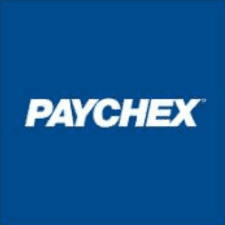
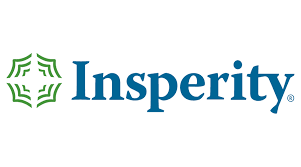
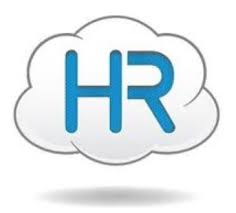 Are you a business that is weighing up the pros and cons of different software systems? Here are the information and software prices you need to know.
Are you a business that is weighing up the pros and cons of different software systems? Here are the information and software prices you need to know.